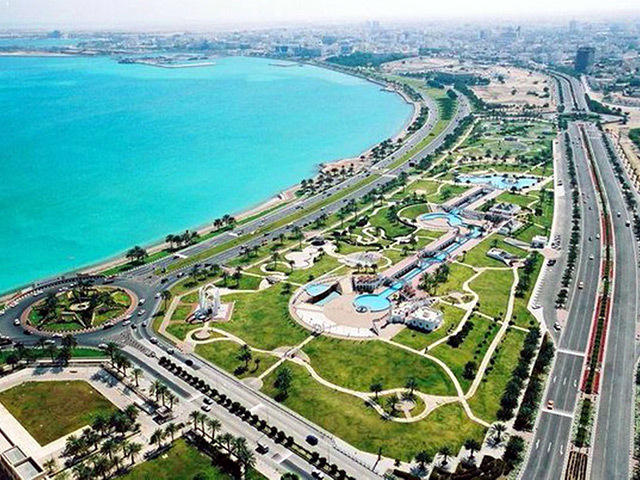
The world’s top oil exporters are burning through their petrodollar assets at an accelerating pace, increasing the pressure to reach a deal to freeze production to bolster prices.
The 18 nations set to gather in Doha on Sunday to discuss a production freeze have spent $315 billion of their foreign-exchange reserves — about a fifth of their total — since the oil slump started in November 2014, according to data compiled by Bloomberg. In the last three months of 2015, reserves fell nearly $54 billion, the largest quarterly drop since the crisis started.
The petrodollar burn has consequences beyond the oil nations, affecting international fund managers like Aberdeen Asset Management Plc and global currencies markets. Oil nations have traditionally held their reserves in U.S. Treasuries and other liquid securities. Nonetheless, the impact in credit markets has been muted as central banks continue to buy debt.
“We expect 2016 to be yet another painful year for most of the oil states,” said Abhishek Deshpande, oil analyst at Natixis SA in London.
The gathering in Doha will comprise both OPEC and non-OPEC states, though any deal to boost prices will probably be largely cosmetic as countries are already pumping nearly at record levels.
In a letter inviting countries to the Doha meeting, Qatar Energy Minister Mohammed Al Sada said oil countries need to stabilize the market in “the interest of a healthier world economy as the present low price is seen to be benefiting no one.”
Saudi Arabia accounts for nearly half of the decline in foreign-exchange reserves among oil producers, with $138 billion — or 23 percent of its total — followed by Russia, Algeria, Libya and Nigeria. In the final three months of last year, Saudi Arabia burned through $38.1 billion, the biggest quarterly reduction in data going back to 1962.
The oil slump started in November 2014 when the Organization of Petroleum Exporting Countries, led by the Saudis, decided to fight for market share — and bury U.S. producers — rather than cut production to support prices as it had done in the past. The policy sent Brent crude, the global oil benchmark, down from an annual average of $111 a barrel in 2013 to an average of just $35 so far this year. The plunge forced producers to tap their rainy day funds.
Fitch Ratings on Tuesday lowered the credit rating of Saudi Arabia to AA-, following similar steps already taken by Standard & Poor’s as well as Moody’s Investors Service. Fitch said that Riyadh would face large fiscal deficits this year and a “large share of the government’s financing needs will be funded by disposing of foreign financial assets.”
The International Monetary Fund forecast that Saudi Arabia’s current-account shortfall will equal 10.2 percent of its gross domestic product this year, the most since 1998, when oil prices tumbled to $10 a barrel. Likewise, the United Arab Emirates is facing a balance of payments deficit this year for the first time since reliable statistics start in 1980, according to the IMF.
The total drop in petrodollar assets isn’t possible to calculate as some Middle East countries, including Kuwait and the U.A.E., don’t disclose timely data about their sovereign wealth funds.
Brent crude futures, which sank to a 12-year low in January, have climbed 30 percent since Saudi Arabia, Russia, Qatar and Venezuela reached a preliminary agreement to freeze output in February. This week, Russia said it sees a deal to freeze oil output as possible when it meets other producers, regardless of whether Iran — which has said it plan to boost output — joins the deal.
